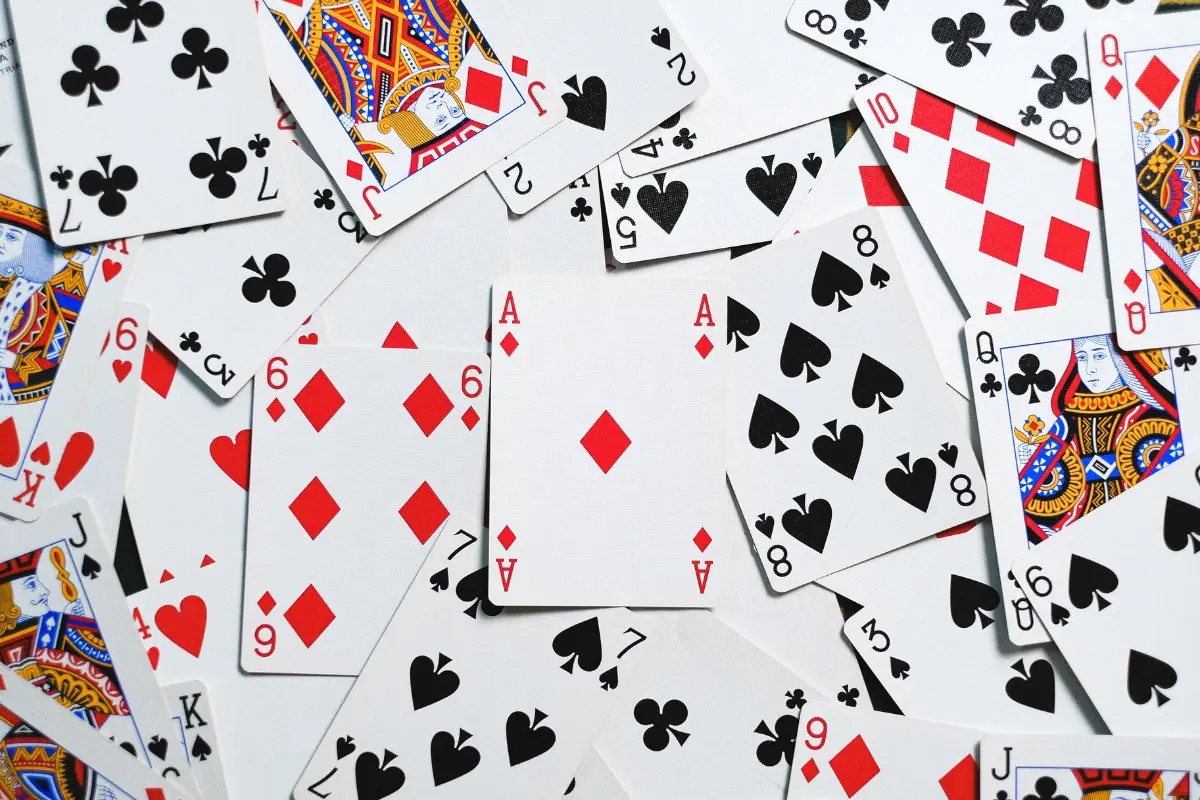Canasta is a classic card game that has captivated players around the world for decades. Originating in Uruguay in the 1940s, it quickly gained popularity in South America before spreading to North America and beyond.
Today, Canasta remains a favorite pastime among card game enthusiasts, thanks to its unique combination of strategy, teamwork, and luck. Whether you’re a seasoned player or a newcomer looking to learn the ropes, this guide will walk you through the essentials of Canasta, from its basic rules to advanced strategies.
History of Canasta
The game of Canasta was invented in Montevideo, Uruguay, by Segundo Santos and Alberto Serrato in 1939. Their goal was to create a card game that blended elements of Rummy while introducing new strategic depth.
The game quickly spread across South America, particularly in Argentina, and by the late 1940s, it had reached the United States. Canasta became a card game craze in the 1950s, with various rule variations emerging. Today, while different versions exist, the classic Canasta rules remain widely played and cherished.
Objective of the Canasta Card Game
The primary objective of Canasta is to score points by forming melds—sets of at least three cards of the same rank. The ultimate goal is to reach a predetermined number of points, typically 5,000, before your opponents do. Canasta is often played in partnerships of two against two, although variations exist for two or three players.
The Deck and Card Values
Canasta is played with two standard decks of 52 playing cards, plus four Jokers, for a total of 108 cards.
Each card has a point value:
- Jokers: 50 points each (wild cards)
- Twos (also wild cards): 20 points each
- Aces: 20 points each
- Eights through Kings: 10 points each
- Fours through Sevens: 5 points each
- Threes: Special value (see below)
Setting Up the Game
- Players – Canasta is typically played with four players in partnerships, but variations allow for two or three players.
- Dealing – Each player is dealt 11 cards (in some variations, 15 cards). The rest of the cards form a draw pile.
- Discard Pile – The top card is turned face up to begin the discard pile. If it’s a red three or a wild card, another card is placed on top.
- Red Threes – If a player is dealt a red three, they must place it on the table and draw a replacement card. Red threes are bonus cards.
How to Play Canasta
1. Drawing Cards
On a player’s turn, they must choose to either draw two cards from the stockpile or take the entire discard pile (provided they meet the conditions for taking it).
2. Forming Melds
A meld is a group of at least three cards of the same rank. Players aim to form these to earn points.
- Natural Melds: Melds made up of only natural cards (no wild cards)
- Mixed Melds: Melds that include up to three wild cards
- Canasta: A meld of seven or more cards (a complete Canasta earns bonus points)
3. Using Wild Cards
Wild cards (Jokers and Twos) can be used in mixed melds but cannot outnumber natural cards.
4. Freezing the Discard Pile
If a wild card or a black three is placed on the discard pile, it is “frozen.” This means that players can only take the pile if they have a natural pair matching the top card.
5. Going Out
A player may go out when they have formed at least one Canasta and have played all their cards. Their partner must approve before they go out.
Scoring in Canasta
The points in Canasta are calculated as follows:
- Natural Canasta (without wild cards) – 500 points
- Mixed Canasta (with wild cards) – 300 points
- Each red three – 100 points (if a team collects all four, they get a bonus of 400 points)
- Going out – 100 points
- Each melded card’s value – Added to the score
Teams subtract points for unmelded cards in their hands when the game ends.
Strategies to Win at Canasta
- Prioritize Canastas – Since a Canasta is required to go out and earns high points, focus on forming at least one as early as possible.
- Control the Discard Pile – Keep an eye on the discard pile and freeze it when necessary to prevent your opponents from taking it.
- Save Wild Cards – Use wild cards strategically rather than adding them to melds too soon.
- Observe Opponents – Track the cards they pick up and discard to anticipate their moves.
- Go Out Wisely – Ensure that going out is beneficial for your team before making the move.
Popular Variations of Canasta
While the classic four-player partnership Canasta is the most well-known version, several popular variations exist:
- Hand and Foot: Players are dealt two sets of cards (a “hand” and a “foot”) and must play through both.
- Samba Canasta: Allows sequences of three or more cards of the same suit in addition to traditional melds.
- Bolivia Canasta: Similar to Samba but includes wild card melds.
- Two-Player Canasta: Adjusted rules for a more strategic duel between two players.
Why Play Canasta?
Canasta is more than just a game—it’s a test of skill, strategy, and teamwork. It offers numerous benefits, including:
- Mental Stimulation: Engages memory, critical thinking, and problem-solving skills.
- Social Interaction: Strengthens friendships and family bonds.
- Exciting and Dynamic Gameplay: No two games are ever the same, keeping the challenge fresh.
- Easy to Learn, Hard to Master: Beginners can pick up the basics quickly, but the game’s depth ensures long-term enjoyment.
Final Thoughts
Whether you’re playing casually with friends or competing in a tournament, Canasta is a fantastic card game that rewards patience, strategic thinking, and teamwork. Its rich history and engaging mechanics ensure that it remains a favorite among card game lovers worldwide. If you haven’t tried Canasta yet, now is the perfect time to shuffle up the decks, gather your friends, and experience this classic game for yourself!

